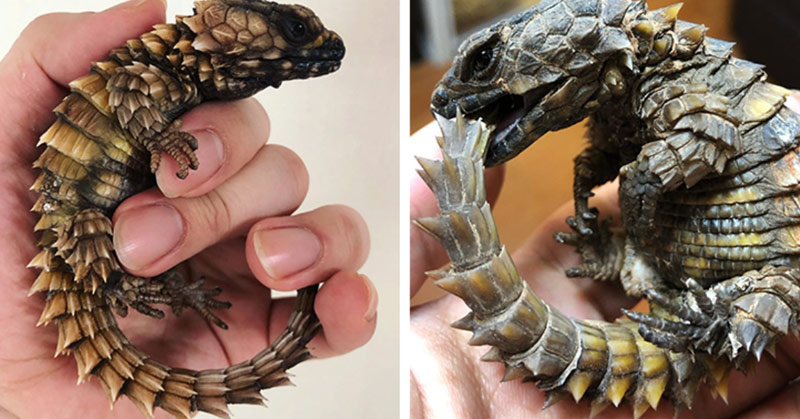Generally, Lizards cannot be categorized as cute reptiles, but somehow this one passes the cute test all while looking a little scary at the same time. Have you met a reptile that is amazingly cute and haunting at the same time? No? Meet the Armadillo Lizard, the mini-dragon lookalike. Found in the rocky mountains of the Succulent Karoo region in South Africa, this lizard possesses armor-like features on its body. But while it is undoubtedly dangerous-looking, this unique animal avoids confrontations, preferring to scurry away rather than attack a predator. Other times, it curls its body and stays still for almost an hour until the threat eventually passes. This makes it very easy to catch [1].
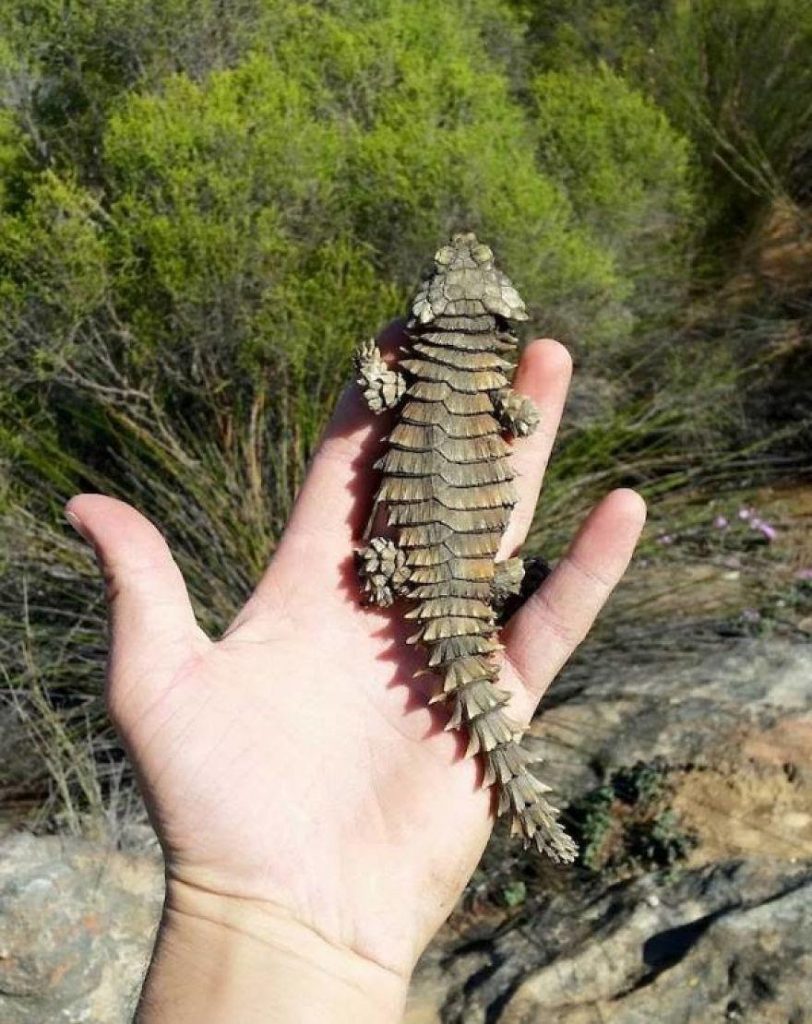
Read: Poodle Cats: Yes, They’re a Thing
Protective lover
Also known as Ouroborus cataphractus or the golden armadillo lizard, these pointy-looking reptiles vary in color, with some possessing a light yellowish-brown and others a regular brown. This makes it easy for it to blend with its environment and remain shielded from enemies.
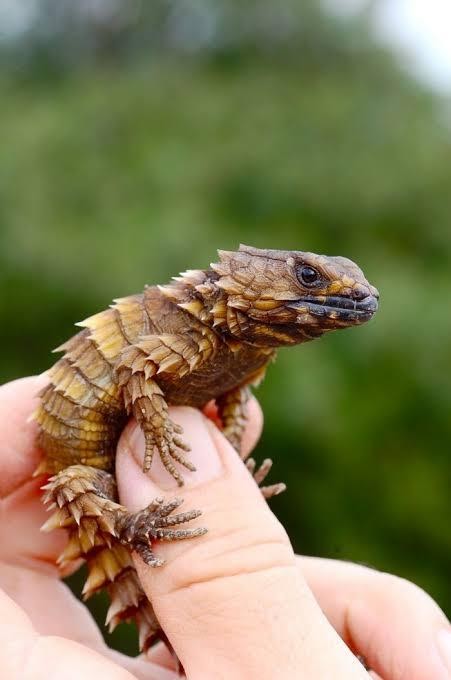
No matter what coloring they may possess, they are easily recognizable by the hard boney scales and spines that cover their body. The only part that is soft and not covered in spikes of any sort is its underbelly. Armadillo lizards typically grow up to four inches long and have a life span of 10 years.
Unlike other reptiles who reproduce by laying eggs, the Amarillo lizard is unique in the way it reproduces, giving birth to one or two offspring annually. The gestation period for a female lizard of this species is between 6-8 months.
The male armadillo is a territorial animal and will protect its turf. But when the mating season approaches, another version is unleashed – a more protective one that will do anything to keep other male competitors at bay while protecting its female partner [2].
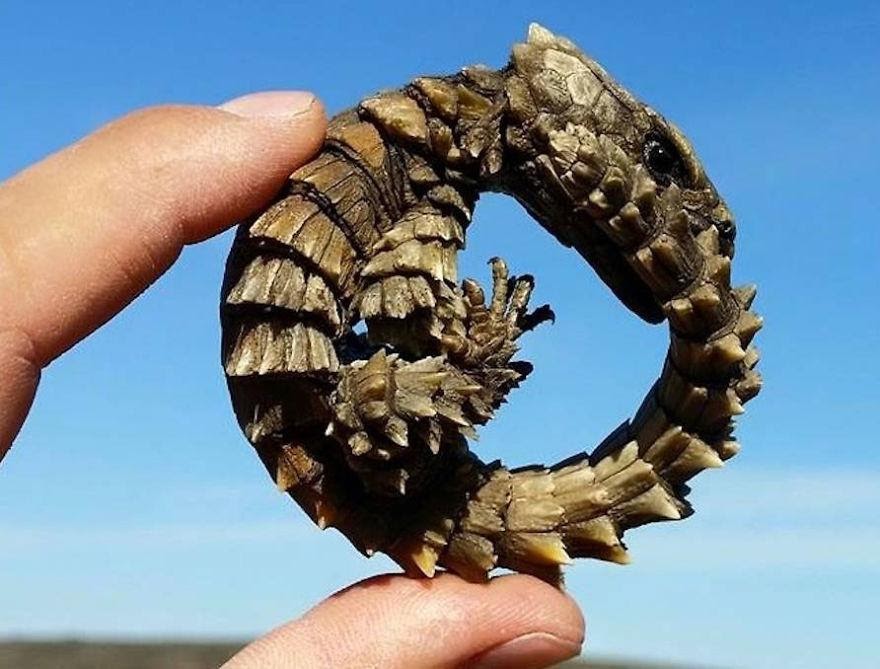
Like humans, the female armadillo lizards can take some time between giving birth, oftentimes a year, to tend to their offspring. This is uncommon among other reptiles.
Communal groups: an extra layer of protection
While these reptiles often shy away from the company of others, they will form communal groups with their own kind. This makes seeing a single armadillo lizard in the wild a rare phenomenon.
Frequently communal groups have a combination of both males, females, and juveniles alike, rather than groups of male, female and juvenile, respectively. This implies that each group is mixed with both young, old, male, and female armadillo lizards. It is thought that living in large groups is this reptile’s way of having an extra layer of protection since most hunters or predators would shy away from contending with a large group [3].
Unfortunately, this is not the case. In fact, the very existence of this eccentric animal is threatened by the actions of humans who hunt them as pets. So while these reptiles may have developed diverse strategies to protect themselves from other creatures lurking in the wild, they are still at the mercy of traffickers. It is no surprise that they were classified as a vulnerable population, a status which was later downgraded to least concern in the 1990s.
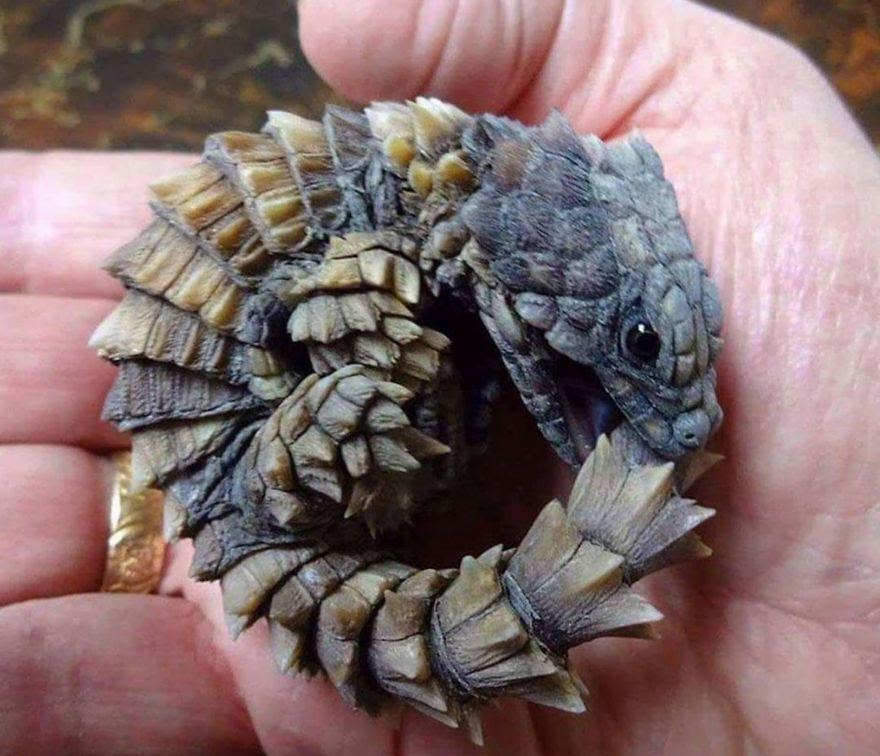
While there have been several laws put in place to curb the collection of the armadillo lizard for the pet trade, its population is still under massive threat. The levels to which traffickers will go to get them is mind-boggling. But a collaborative effort by Lutzville and Malmesbury police offices of the Stock Theft and Endangered Species Unit, CapeNature Conservation Services, the Nuwerus, the Organised Crime office of the National Prosecuting Authority, and the Biodiversity Crime Unit saw four foreigners who were collecting the lizards in South Africa convicted.
“These sentences send a clear message to biodiversity criminals that we will deal harshly with those who seek to profit illegally from our biodiversity. This once again demonstrates the kind of results that can be achieved when law enforcement agencies work together,” said Paul Gildenhuys, CapeNature’s Biodiversity Crime Unit manager [4].
Although the law declaring collection of this pet illegal has helped in reducing the level of poaching activities, there have still been difficulties in reinforcing this law, with the reptile still finding its way to pet stores and pet conventions.
Eating habits
Like armadillos, the armadillo lizard generally feeds on small insects and invertebrates. However, their primary source of food is termites. While termite mounds can be located far away from the lizards’ homes, they can travel as far as 60 feet to get food. This makes them dependent on the termite populations for sustenance. Changes, whether environmental or otherwise, that affects the termites, will impact on the armadillo lizard population.
Sources
- Armadillo Lizards Almost Look Like Baby Dragons, And They are Hauntingly Beautiful. Inner Splendor. Moumita Basu. https://read.ilovehalloween.net/these-armadillo-lizards-are-the-cutest-creatures-we-have-seen. Accessed 25-03-2020.
- Armadillo Lizards Look Like Baby Dragons. The Rainforest Site. ANASTASIA ARELLANO. https://blog.therainforestsite.greatergood.com/armadillo-lizards-baby-dragons/. Accessed 25-03-2020.
- Meet The Armadillo Lizard: A Mini-Dragon That Curls Up Like An Armadillo. Ati. Natasha Ishak. https://allthatsinteresting.com/armadillo-lizard-ouroborus-cataphractus. Accessed 25-03-2020.
- Severe blow for animal traffickers. IOL. https://www.iol.co.za/capetimes/news/severe-blow-for-animal-traffickers-15189808. Accessed 25-03-2020.
